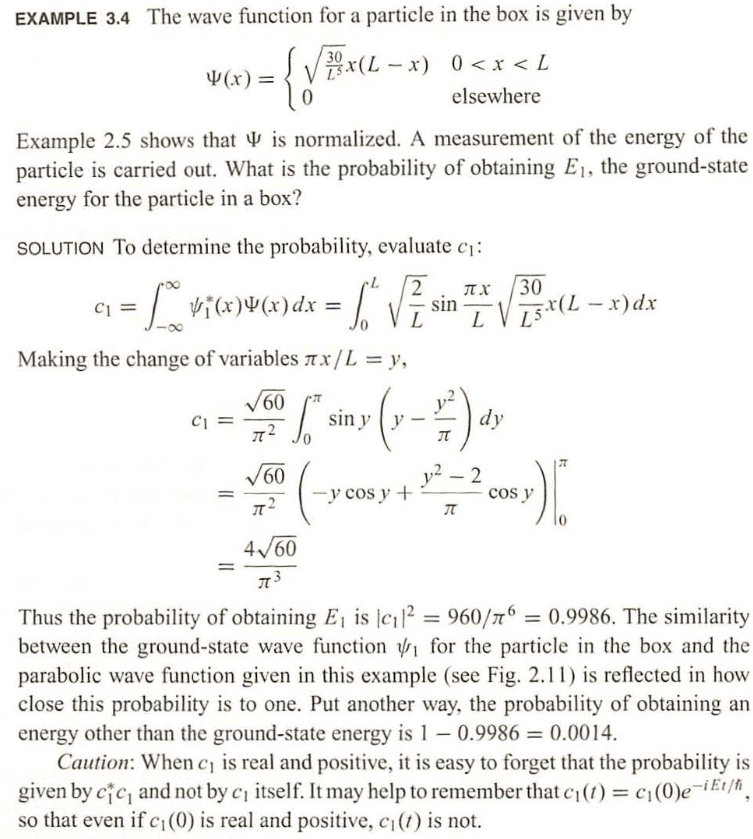Show that the probability of obtaining En, for a particle in a box with wave function Y(x)= -{√B. is given by |c₁|² 30x (L-x) 0
Show that the probability of obtaining En, for a particle in a box with wave function Y(x)= -{√B. is given by |c₁|² 30x (L-x) 0
Related questions
Question
Show that the probability of obtaining En for a particle in a box with the provided wave function (see first image) is given by the equation in the first image.
Hint: The probability of obtaining the ground-state energy E1 is determined in Example 3.4, as shown in the second provided image.
![Show that the probability of obtaining E,, for a
particle in a box with wave function
(x) =
is given by
3x(L − x) 0 < x < L
elsewhere
{√ EXCL_
|c₁|²=
240
поль
[1-(-1)"]²](/v2/_next/image?url=https%3A%2F%2Fcontent.bartleby.com%2Fqna-images%2Fquestion%2F0bf2426c-5e7b-4c35-a267-4cbf095a9111%2F5b9a74c7-215e-4de7-bb8c-6b0dafa02956%2Fnmv1fxd_processed.png&w=3840&q=75)
Transcribed Image Text:Show that the probability of obtaining E,, for a
particle in a box with wave function
(x) =
is given by
3x(L − x) 0 < x < L
elsewhere
{√ EXCL_
|c₁|²=
240
поль
[1-(-1)"]²

Transcribed Image Text:EXAMPLE 3.4 The wave function for a particle in the box is given by
30
{√BX(L_
4(x) =
Example 2.5 shows that is normalized. A measurement of the energy of the
particle is carried out. What is the probability of obtaining E₁, the ground-state
energy for the particle in a box?
C1
SOLUTION To determine the probability, evaluate c₁:
= [₁ v₁(x)(x) dx = [₁ √ ² sin
L
x(L-x) 0<x< L
elsewhere
Making the change of variables x/L = y,
C1
√60
I²
√60
2 π.Χ.
L
30
15x (L - x) dx
["siny (y-2) dy
32² - 2 cos y )
-y cos y +
T
4√60
I
Thus the probability of obtaining E₁ is c₁² = 960/6 = 0.9986. The similarity
between the ground-state wave function for the particle in the box and the
parabolic wave function given in this example (see Fig. 2.11) is reflected in how
close this probability is to one. Put another way, the probability of obtaining an
energy other than the ground-state energy is 1 - 0.9986 = 0.0014.
Caution: When c₁ is real and positive, it is easy to forget that the probability is
given by cic, and not by c₁ itself. It may help to remember that c₁ (t) = c₁(0)e-it/h,
so that even if c₁ (0) is real and positive, c₁ (t) is not.
Expert Solution
This question has been solved!
Explore an expertly crafted, step-by-step solution for a thorough understanding of key concepts.
This is a popular solution!
Trending now
This is a popular solution!
Step by step
Solved in 2 steps with 2 images
